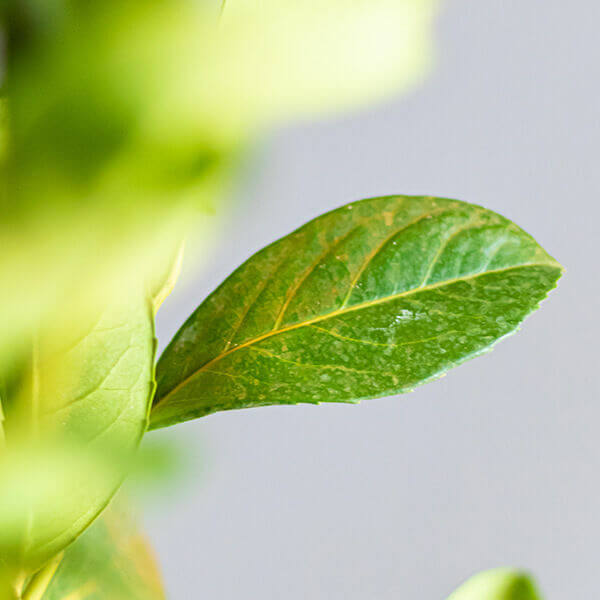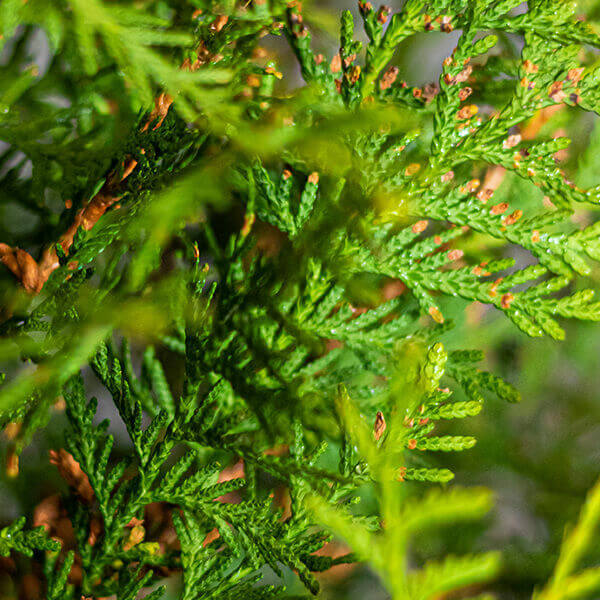Fast-growing Evergreen Hedge Plants
Fast-growing Evergreen Hedge Plants
Blog Article
Best Hedging Plants For Soft Borders
Enhance your garden's allure with lavish hedge varieties such as Yew (Taxus), Thuja, Laurel, Photinia, and Bamboo, celebrated for their structural stability and environmental benefits.
Yew and Thuja supply evergreen protection and winter season durability, while Laurel uses fast development and broad, aromatic leaves.
Photinia adds seasonal appeal with its lively red foliage, and Bamboo lends a low-maintenance, tranquil ambiance.
These hedges enhance air quality, decrease noise, and develop tranquil, private areas.
Proper planting, spacing, and upkeep guarantee energetic development and ecological harmony.
Explore how these rich ranges can elevate your garden's beauty and wellness.
Key Takeaways
Change Your Garden With Lush Hedge Ranges
- Select Yew for its thick, evergreen development and unparalleled longevity.
- Select Laurel for its quick growth and broad leaves, making sure fast personal privacy.
- Select Photinia for its lively seasonal foliage, which turns a striking dark red.
- Make use of Bamboo for a low-maintenance, winter-hardy hedge with aesthetic appeal.
- Area plants 2-3 per meter and prune frequently for optimum development and health.
Popular Hedge Plants
When changing a garden with lavish hedge ranges, it's vital to think about popular hedge plants such as Yew, Thuja, Laurel, and Photinia due to their distinct characteristics and benefits.
Yew (Taxus) is highly esteemed for its longevity and thick, green development, making it a prime option for sustaining landscapes.
Thuja is kept in mind for its evergreen foliage and robust winter resilience.
Photinia adds seasonal vibrancy with red leaves that darken in time, producing dynamic visual appeal.
Laurel offers rapid development and aromatic, broad leaves, ideal for fast personal privacy.
Additionally, Bamboo is an excellent option for atmosphere, providing a low-maintenance, winter-hardy option that boosts the garden's visual with its sophisticated, swaying walking sticks.
These selections accommodate a variety of horticultural requirements and choices.
Advantages of Garden Hedges
Garden hedges provide a plethora of advantages, making them a valuable addition to any landscape. These natural barriers are cost-efficient to execute and provide significant wind defense, improving air circulation and contributing to noise decrease. The thick foliage of hedges like Thuja and Beech ensures personal privacy by obstructing visibility, developing a peaceful and secluded environment.
Hedges also play a vital function in microclimate policy, providing a steady environment that promotes plant development and reduces temperature level changes. Their intricate leaf structures filter pollutants, enhancing air quality and contributing to a much healthier garden ecosystem.
Furthermore, hedges master noise decrease, absorbing and deflecting sound waves to lower ambient sound levels. This double functionality of supplying both visual and acoustic personal privacy boosts the general serenity and aesthetic appeal of any garden.
Planting and Maintenance Tips
For a successful hedge, careful preparation of the planting area is important. Guarantee the soil has appropriate pH and drainage to support strong root development.
Area the plants properly for the chosen types. Water the hedge often during its preliminary growth phase, changing as needed with seasonal modifications.
Execute a systematic bug control and illness avoidance method, utilizing natural or chemical treatments when required. Frequently inspect for aphids, mites, and fungal infections.
Apply mulch to keep wetness and suppress weeds. Seasonal pruning promotes thick development and air blood circulation, essential for plant health.
Following these guidelines will help you cultivate a dynamic, properly maintained hedge that boosts the beauty of your garden.
Spacing and Trimming Guidelines
Spacing and Cutting Guidelines
Proper spacing and trimming are essential for cultivating healthy, visually appealing hedges. Sufficient spacing guarantees each plant receives adequate nutrients, light, and airflow.
Follow these guidelines for ideal hedge upkeep:
- Spacing: Position hedge plants 2-3 plants per meter to motivate robust development.
- Pruning Methods: Routine pruning is vital for keeping wanted hedge height and shape. Cut brand-new growth in summer season and cut down older wood during winter season.
- Seasonal Care: Change cutting techniques and schedules according to seasonal requirements to make sure plant health.
- Hedge Height: Frequently screen and trim to preserve the desired hedge height and achieve consistent aesthetics.
Sticking to these actions will ensure your hedge grows, enhancing both the appeal and functionality of your garden.
Choosing the Right Hedge
Picking the Right Hedge
Choosing the suitable hedge involves evaluating aspects such as fully grown height, foliage density, and environmental resilience. Effective hedge plant selection needs comprehending each species' development characteristics and site-specific adaptability.
For instance, Yew (Taxus) offers exceptional durability and dense development, while Thuja is noteworthy for its winter durability. Additionally, thinking about maintenance requirements is vital; fast-growing species like Laurel or Privet need regular cutting, whereas low-maintenance choices like Bamboo or Ivy may be more effective for those seeking very little upkeep.
Ecological factors such as soil type, light schedule, and moisture conditions must also direct the choice process. This cautious approach guarantees the picked hedges will thrive, offering both aesthetic and functional benefits to the garden landscape.
Shipment and Planting Advice
To ensure your hedge plants grow, they should be delivered by specialized carriers and planted promptly upon arrival.
Follow these vital steps for successful planting:
- Soil Preparation: Enhance the soil with organic matter to enhance drain and nutrient content.
- Planting Depth: Produce a trench twice the width and equivalent to the depth of the root ball.
- Watering Techniques: Water thoroughly after planting, keeping the soil regularly wet however not saturated.
- Mulching: Apply a layer of mulch to keep wetness and suppress weeds.
Customer Support and Service
Provided the important function of prompt assistance in horticultural pursuits, our customer support team is offered 6 days a week through telephone, e-mail, and social networks to use skilled advice and swiftly deal with any concerns. Their commitment to quick reaction times guarantees client fulfillment by solving queries related to plant health, optimal planting methods, and upkeep schedules.

Schedule
Within 48 hours
This extensive support group, strengthened by an excellent 9.3/ 10 consumer rating, highlights our commitment to improving the gardening experience for every single customer.
Frequently Asked Questions
How Long Does It Take for Hedge Plants to Establish?
Hedge plants typically require one to three years to become fully established, with the exact duration varying by species and growing conditions.
Effective care during this critical period is essential for robust development. Constant watering, alert weed control, and proper fertilizer application are critical in promoting strong root advancement.
For example, fast-growing species like Laurel may develop quicker, while slower-growing varieties such as Yew might take longer. Diligent upkeep speeds up the facility process, resulting in healthy and dense hedges.
What Are the Best Hedge Plants for Privacy?
The question of the finest hedge plants for personal privacy involves evaluating evergreen and deciduous alternatives.
Evergreen hedges like Thuja, Laurel, and Cypress supply year-round coverage, ensuring constant personal privacy.
In contrast, deciduous hedges such as Beech offer seasonal personal privacy, shedding leaves in chillier months.
Key upkeep ideas for privacy hedges consist of routine trimming, fertilizing in spring, and proper spacing-- normally 2 to 3 plants per meter.
Furthermore, consistent watering and thorough weed removal are crucial for promoting healthy, thick growth.
Can Hedge Plants Bring In Wildlife to My Garden?
Yes, hedge plants can draw in wildlife to your garden by providing necessary benefits like shelter, food, and nesting websites, consequently enhancing regional biodiversity. For instance, yew, holly, and laurel are outstanding for drawing in birds, while ivy supports a variety of bugs.
Nevertheless, it's essential to keep in mind that there are some disadvantages, such as increased upkeep to manage insects and routine upkeep. Thoroughly selecting and preserving hedge ranges can help stabilize these downsides and benefits, ultimately cultivating a sustainable and dynamic environment in your garden.
Are There Any Flowering Hedge Plants Available?
Yes, there are flowering hedge plants readily available that can enhance the charm of your garden.
For instance, Elaeagnus, also referred to as Olive Willow, produces aromatic white flowers in the fall, including a touch of elegance.
Photinia, another popular choice, showcases dynamic red leaves that grow into an abundant green, producing a vibrant visual result throughout the seasons.
To ensure these plants flourish, it's vital to practice correct pruning techniques and seasonal maintenance, such as trimming new development in the summer season and cutting down in the winter season.
These measures will help keep the health and visual appeal of your flowering hedges.
How Do I Prevent Pests in My Hedge Plants?
To avoid pests in hedge plants, employ natural pest control methods Additional info and preserve appropriate hedge care. Introduce useful bugs like ladybugs, which take advantage of damaging insects, to produce a well balanced community.
Routinely examine your hedges for indications of infestation and quickly eliminate any afflicted parts to prevent the spread. Guarantee the health of your hedges by applying balanced fertilizers and providing adequate water.
Utilize mulching to maintain soil wetness and correct spacing to minimize plant stress and promote robust growth. These practices collectively help in lessening pest issues and maintaining a healthy hedge.
Conclusion
In essence, picking the ideal hedge varieties such as Yew, Thuja, and Laurel can transform any garden into a tranquil sanctuary. These plants offer year-round plant, improve visual appeal, and deal useful advantages like noise reduction and wind defense.
Correct planting techniques, precise spacing, constant watering, and seasonal trimming are crucial for optimal development.
Trusted delivery services and professional consumer support ensure a seamless experience from purchase to planting, making it easier than ever to raise your outside area.
Garden hedges offer a wide range of advantages, making them an important addition to any landscape. These natural barriers are cost-effective to carry out and offer substantial wind defense, boosting air blood circulation and contributing to sound reduction. The thick foliage of hedges like Thuja and Beech ensures personal privacy by obstructing exposure, developing a peaceful and secluded environment.

Pruning Methods: Routine pruning is important for maintaining desired hedge height and shape. Cut new growth in summer season and cut back older wood throughout winter.
Report this page